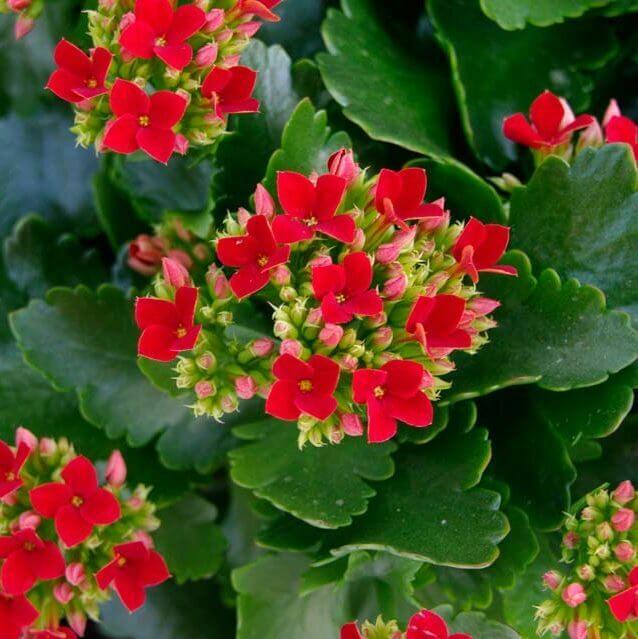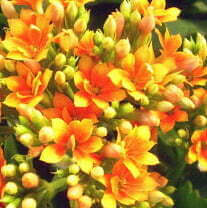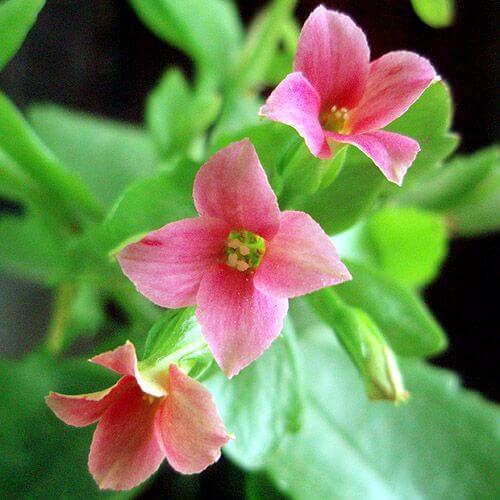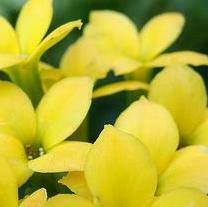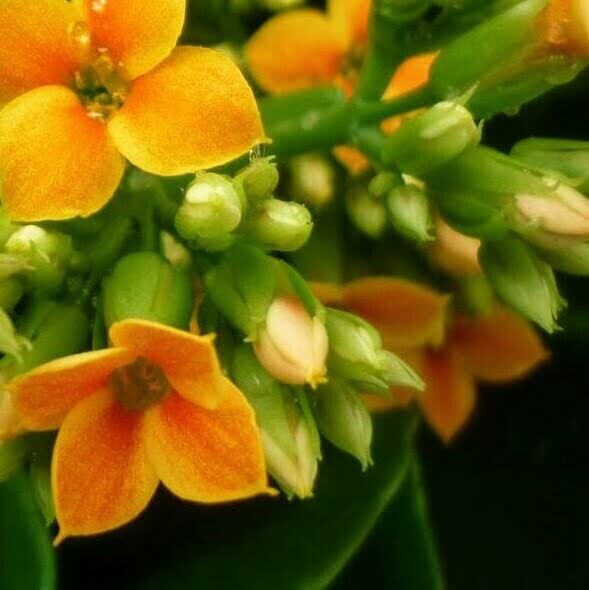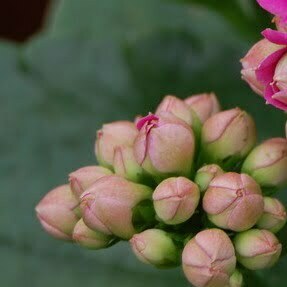A general guide to caring for Kalanchoe blassfeldiana. | |||||||||||||
Below is a brief discussion on caring and growing tips for Kalanchoe blossfeldiana. IntroductionKalanchoe is a herbaceous, glabrous, bushy, evergreen and perennial succulent plant. They can reach 30-45cm in height and their spread is 10-30cm. Kalanchoe have a slow growth rate and flowering time is early spring. They originate from Madagascar and belong to the Crassulaceae family. They are commonly known as, Flaming Katy or Florist Kalanchoe. The soil requirements.Kalanchoe is a succulent plant and will do well in soil that provides good water drainage. Ordinary potting soil with river sand will do fine. You can make your own soil mix by mixing 2 parts potting soil with 1 part river sand or visit your local nursery and ask for a succulent or cacti soil mix. Light requirements.Kalanchoe will need plenty of sunlight, as succulents do. When exposed to full sun the edges of their leaves will become tinged red. When kept indoors place them in a north-facing window during winter. In summer keep them in bright indirect light or east/west facing window. Not enough sunlight will cause the plant to grow spindly and thin. Kalanchoe is photoperiodic meaning they respond to length of day light before flowering. The shorter daylight during winter and then a increase of daylight in spring is what triggers them to start blooming. With that said, you can manipulate the amount of light the plant receives to force it to bloom again. Cover the plant with a black cloth or keep it in a dark room for 14 hours during the night for 2 weeks. Provide only moderate light during the day. Do not fertilize during this time and provide minimal water. The idea is to imitate the shorter days and longer nights of winter proceeded with longer day periods of spring that follows. You can proceed with normal care after the 2 weeks of artificial night time. Flower buds should appear in six or eight weeks. Watering needs.The main cause of death to any succulent or cacti is over watering. The same can be said of Kalanchoe. Allow the service soil of your plant to dry between watering but do not let the soil dry out completely. When the soil dry out completely the leaves will shrivel and turn yellow. However, never let your Kalanchoe stand in water as they are prone to root rot. Allow the water run out the bottom and empty the tray immediately. Reduce watering Kalanchoe during the winter months. The preferred temperature.Kalanchoe will do well indoors but keep them away from drafts and above 10°c. How to fertilizer.When a plant goes in to flowering, the plant can become stressed as the flowering phase will drain the plant of nutrients. Feed your Kalanchoe with a balanced organic fertilizer every few weeks during this period to help it cope with the stress. General maintenance.Keep Kalanchoe neat and tidy by removing spent flowers and gently wipe or spray them to remove any dust. Deadheading during the flowering time will encourage more blooms. Kalanchoe have very sensitive root systems and it is recommended that clay pots be used for better aeration of the roots. Pests and diseases.Aphids, spider mites, scale insect and nematodes can all attack Kalanchoe. Make use of a nontoxic treatment, like neem oil to treat your plant against insects. For the treatment of mealybugs or aphids infestation you can tap them with a cotton swap dipped in rubbing alcohol. |
| ||||||||||||

